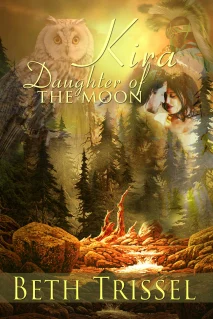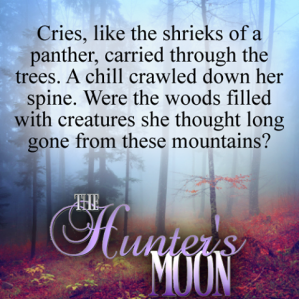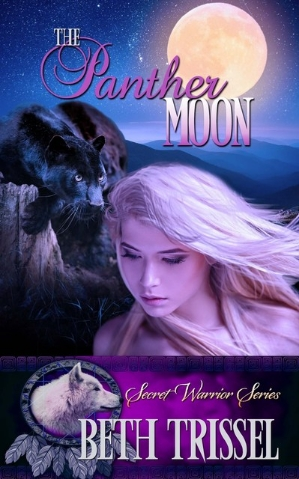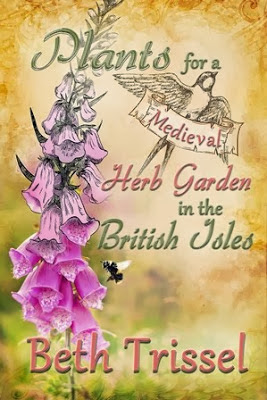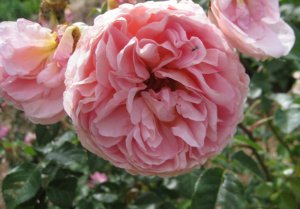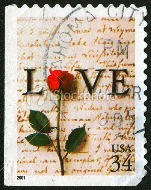 ‘Hot lavender, mints, savory, marjoram;
‘Hot lavender, mints, savory, marjoram;
The marigold, that goes to bed wi’ the sun,
and with him rise weeping.’ ~ Shakespeare, Winter’s Tale
If you set it,
the cats will eat it,
If you sow it,
the cats don’t know it.
~Philip Miller, The Gardener’s Dictionary, Referring to Catnip
Salt is a preservative. It really holds flavor. For example, if you chop up some fresh herbs, or even just garlic, the salt will extract the moisture and preserve the flavor. ~ Sally Schneider
The Herbs ought to be distilled when they are in their greatest vigor, and so ought the Flowers also. ~Nicholas Culpeper
The intense perfumes of the wild herbs as we trod them underfoot made us feel almost drunk. ~Jacqueline du Pre

I plant rosemary all over the garden, so pleasant is it to know that at every few steps one may draw the kindly branchlets through one’s hand, and have the enjoyment of their incomparable incense; and I grow it against walls, so that the sun may draw out its inexhaustible sweetness to greet me as I pass ….
– Gertrude Jekyll
“There’s fennel for you, and columbines; there’s rue for you: and here’s some for me; we may call it herb of grace o’ Sundays. O! you must wear your rue with a difference. There’s a daisy; I would give you some violets, but they withered all when my father died.” ~Shakespeare, Hamlet
Thine eyes are springs in whose serene And silent waters heaven is seen. Their lashes are the herbs that look On their young figures in the brook. ~William C. Bryant
 Waters are distilled out of Herbs, Flowers, Fruits, and Roots.
Waters are distilled out of Herbs, Flowers, Fruits, and Roots.
~Nicholas Culpeper
“We have finally started to notice that there is real curative value in local herbs and remedies. In fact, we are also becoming aware that there are little or no side effects to most natural remedies, and that they are often more effective than Western medicine.” ~Anne Wilson Schaef
The basil tuft, that waves
Its fragrant blossom over graves.
~Thomas Moore, Lalla Rookhm, Light of the Harem
“The herb that can’t be got is the one that heals.” ~ Irish Saying
See how Aurora throws her fair Fresh-quilted colours through the air: Get up, sweet-slug-a-bed, and see The dew-bespangling herb and tree. ~ Herrick, Robert ~Corinna’s Going a Maying

As for rosemary, I let it run all over my garden walls, not
only because my bees love it but because it is the herb
sacred to remembrance and to friendship, whence a
sprig of it hath a dumb language.
– Sir Thomas Moore
Eat leeks in oile and ramsines in May,
And all the year after physicians may play.
(Ramsines were old-fashioned broad-leafed leeks.)
My gardens sweet, enclosed with walles strong, embarked with benches to sytt and take my rest. The Knotts so enknotted, it cannot be exprest. With arbours and alys so pleasant and so dulce, the pestylant ayers with flavours to repulse. ~Thomas Cavendish, 1532.

When daisies pied and violets blue, and lady-smocks all silver white. And Cuckoo-buds of yellow hue, do paint the meadows with delight. ~ William Shakespeare, 1595.
Women with child that eat quinces will bear wise children. ~Dodoens, 1578.
Gardening with herbs, which is becoming increasingly popular, is indulged in by those who like subtlety in their plants in preference to brilliance.
– Helen Morgenthau Fox
And because the Breath of Flowers is farre Sweeter in the Aire (where it comes and Gose, like the Warbling of Musick) than in the hand, therefore nothing is more fit for delight, than to know what be the Flowers and the Plants that doe best perfume the Aire. ~ Francis Bacon, 1625
 Caesar….saith, that all the Britons do colour themselves with Woad, which giveth a blew colour… John Gerard, 1597
Caesar….saith, that all the Britons do colour themselves with Woad, which giveth a blew colour… John Gerard, 1597
You have got to own your days and live them, each one of them, every one of them, or else the years go right by and none of them belong to you. ~Herb Gardner
Once you get people laughing, they’re listening and you can tell them almost anything. ~ Herb Gardner
Would You Marry Me?
“According to old wives’ tales, borage was sometimes
smuggled into the drink of prospective husbands
to give them the courage to propose marriage.”
– Mary Campbell, A Basket of Herbs
 As Rosemary is to the Spirit, so Lavender is to the Soul.
As Rosemary is to the Spirit, so Lavender is to the Soul.
– Anonymous
As for the garden of mint, the very smell of it alone recovers and refreshes our spirits, as the taste stirs up our appetite for meat. ~ Pliny the Elder
How could such sweet and wholesome hours
Be reckoned but with herbs and flowers?
– Andrew Marvel
How I would love to be transported into a scented
Elizabethan garden with herbs and honeysuckles, a knot garden and roses clambering over a simple arbor …. ~Rosemary Verey
With holly and ivy,
So green and so gay,
We deck up our houses
As fresh as the day,
With bays, and rosemary,
And laurel complete;
And every one now
Is a king in conceit. ~Poor Robins Almanac, 1695
There’s rosemary, that’s for remembrance;
pray, love, remember; and there is pansies,
that’s for thoughts.
– Shakespeare, Hamlet
 The first gatherings of the garden in May of salads, radishes and herbs made me feel like a mother about her baby – how could anything so beautiful be mine. And this emotion of wonder filled me for each vegetable as it was gathered every year. There is nothing that is comparable to it, as satisfactory or as thrilling, as gathering the vegetables one has grown.
The first gatherings of the garden in May of salads, radishes and herbs made me feel like a mother about her baby – how could anything so beautiful be mine. And this emotion of wonder filled me for each vegetable as it was gathered every year. There is nothing that is comparable to it, as satisfactory or as thrilling, as gathering the vegetables one has grown.
~ Alice B. Toklas
 During my vast research for historicals set in early America I came across a wealth of plant lore and recipes. An avid gardener, I love to grow herbs, heirloom flowers and vegetables. To see, smell, touch and taste the same plants known to my ancestors is a rich connection to those who’ve gone before me. A common thread in my work, whether writing straight historical or paranormal romance is my passion for the past.
During my vast research for historicals set in early America I came across a wealth of plant lore and recipes. An avid gardener, I love to grow herbs, heirloom flowers and vegetables. To see, smell, touch and taste the same plants known to my ancestors is a rich connection to those who’ve gone before me. A common thread in my work, whether writing straight historical or paranormal romance is my passion for the past. Sage is indigenous to the North shore of the Mediterranean, but when the Europeans brought it and other herbs here, the Indians were quick to investigate the new plants. They found sage useful as a curative for ‘a host of ills.'”
Sage is indigenous to the North shore of the Mediterranean, but when the Europeans brought it and other herbs here, the Indians were quick to investigate the new plants. They found sage useful as a curative for ‘a host of ills.'”















